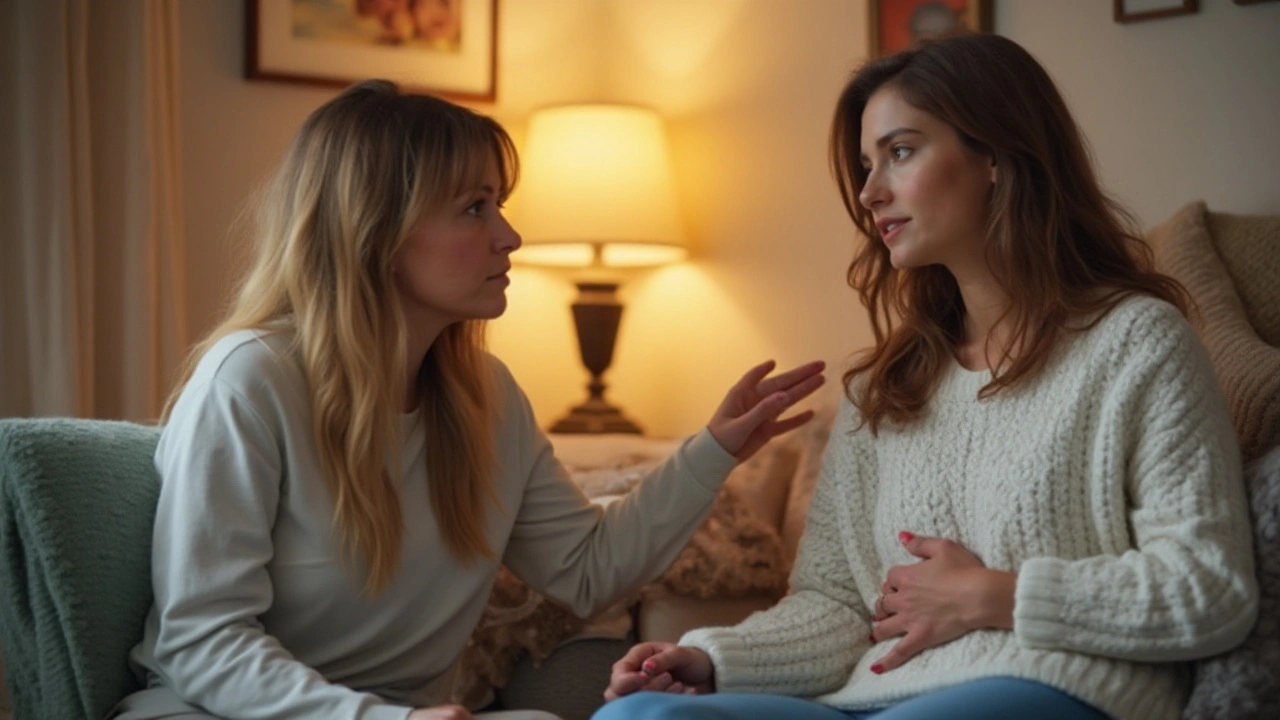Uterine Overgrowth and Relationships — September 2024
This archive highlights our September 2024 post about uterine overgrowth — mainly endometriosis and adenomyosis — and how these conditions affect daily life and close relationships. If you or someone you love deals with heavy pain, fatigue, or mood shifts tied to these conditions, this month’s article offers clear descriptions and practical steps you can use right away.
What uterine overgrowth looks like
Uterine overgrowth covers conditions where tissue grows where it shouldn’t. Endometriosis is when tissue like the lining of the uterus grows outside the uterus. Adenomyosis is when similar tissue grows into the uterine muscle. Both can cause strong cramps, heavy bleeding, pelvic pain, bloating, trouble with bowel or bladder function, and tiredness that won’t go away. Those symptoms can be different from person to person and may change over time.
Quick signposts to watch for: pain that impacts work or sex, periods that get heavier or longer, and ongoing fatigue. If symptoms interfere with daily plans or intimacy, they deserve attention. A medical checkup can confirm what’s going on and point to treatments that actually help.
How it can change relationships — and what you can do
Pain and fatigue change routines fast. One partner might pull back from sex, social plans, or chores. The other partner can feel confused, rejected, or helpless. That gap often grows when people don’t talk plainly about what’s happening.
Start small: name the symptom, not the person. Say “I’m having bad pelvic pain today” instead of “I don’t want to be close tonight.” Being specific helps your partner understand what to expect and how to help. Plan around energy: pick low-key dates, split chores when energy dips, and agree on signals to pause intimacy when pain flares.
Practical help matters. Track symptoms in a simple app or a calendar so you both see patterns. Bring a partner to appointments if that feels comfortable — it helps them hear options from the clinician and join decisions about treatment. If sex is painful, explore non-penetrative intimacy and use lubricants or prescribed treatments. A pelvic physiotherapist or specialist can offer hands-on strategies that often reduce pain during sex.
Mental health matters too. Chronic pain often brings anxiety or low mood. Seeing a counselor or joining a support group gives both partners tools to cope and keeps frustrations from becoming fights. Real examples from our September post show couples who adjusted roles, scheduled recovery time, and used open check-ins to stay connected.
If symptoms are severe or worsening, seek medical advice. Treatments range from pain medications and hormonal options to procedures that may reduce tissue growth. A clear plan from a doctor can ease uncertainty and help couples make informed choices together.
Want more detail? Read the full September article for real-life examples, question lists to take to your appointment, and step-by-step communication tips you can try tonight.

